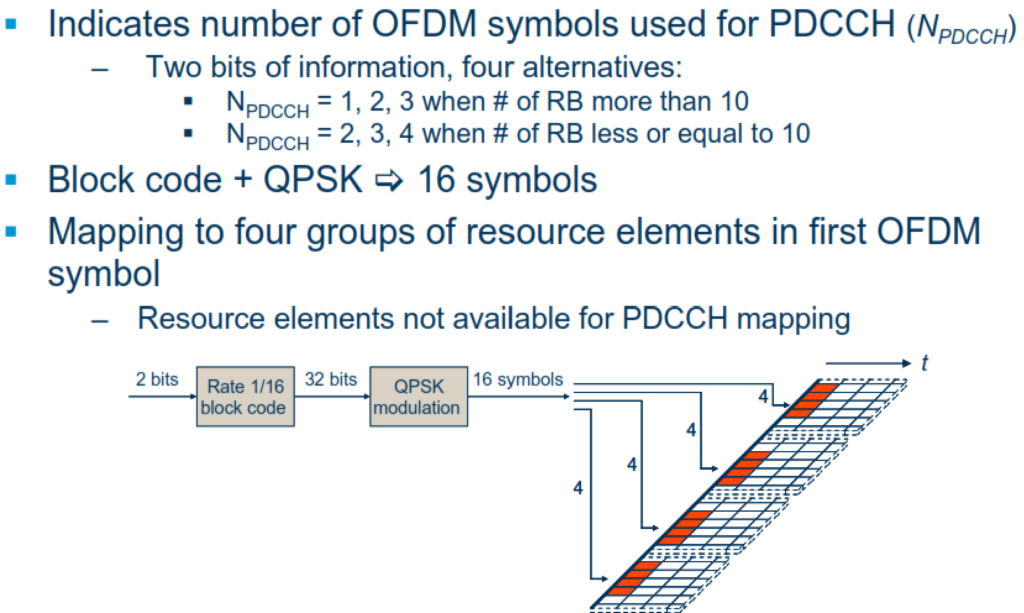PCFICH stands for Physical Control Format Indicator Channel.
The Physical Control Format Indicator Channel (PCFICH) in LTE serves a crucial role in signaling the Control Format Indicator (CFI), which indicates the number of OFDM symbols used for control channel transmissions within each subframe.
Physical Control Format Indicator Channel (PCFICH) in LTE.
The Physical Control Format Indicator Channel (PCFICH) in LTE serves a critical role in signaling the number of OFDM symbols allocated for L1/L2 control signaling within each subframe. This indication is essential for correct system operation, guiding terminals on where to find control channels and where the data region begins. Failure to decode the PCFICH correctly can result in the loss of uplink scheduling grants and downlink data intended for the terminal.
The PCFICH encodes two bits of information, determining whether the control region spans 1, 2, or 3 OFDM symbols, using a rate-1/16 block code. These coded bits undergo scrambling, are modulated using QPSK modulation, and are then mapped to 16 resource elements.

The PCFICH enables UEs to efficiently decode control channel information without extensive processing overhead. It simplifies the process by directly indicating the number of OFDM symbols allocated for control signaling, which would otherwise require multiple decoding attempts if not explicitly signaled.
In LTE networks dedicated to Multimedia Broadcast Multicast Service over Single Frequency Network (MBSFN), where physical control channels are not utilized, the PCFICH is not present.
LTE initially defines three CFI values using 32-bit codewords, with a fourth codeword reserved for future use. These codewords are robustly transmitted using QPSK modulation across 16 resource elements.

Frequency Allocation and Cell-Specific Considerations.
To prevent inter-cell PCFICH collisions, the placement of these four groups in the frequency domain is dependent on the Physical Cell ID (PCI). This ensures that UEs can reliably decode the PCFICH from their intended serving cell without confusion from neighboring cells.
The transmission power of the PCFICH is controlled by the eNB. In scenarios requiring extended coverage within a cell, the eNB can allocate higher power to the PCFICH by reallocating power from other channels, such as PDCCHs, ensuring robust reception throughout the cell.
Transmission and Diversity
To ensure compatibility with different transmit (Tx) diversity schemes specified on groups of 4 symbols, the 16 resource elements are divided into 4 groups of 4 elements each. These groups are strategically spaced in the frequency domain to optimize diversity reception.
The PCFICH shares the same antenna ports as the Physical Broadcast Channel (PBCH). If multiple antenna ports are employed, transmit diversity techniques are applied to enhance reliability and mitigate signal fading.
Conclusion
In summary, the PCFICH in LTE is pivotal for signaling the start of control channels and data regions within each subframe. Its robust design includes error control mechanisms, frequency diversity measures, and cell-specific configurations to guarantee reliable communication and minimize interference across neighboring cells. This ensures that LTE networks maintain efficient and error-free transmission of control and data signals to user terminals.